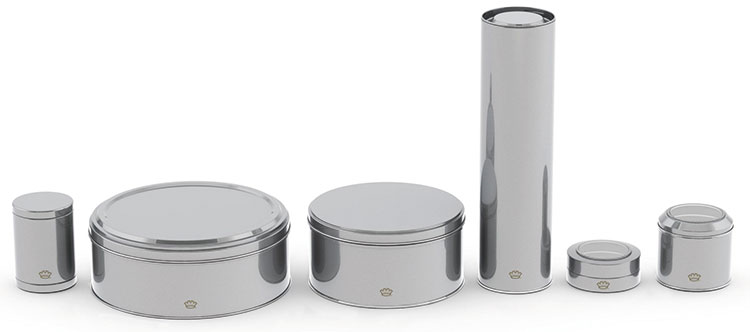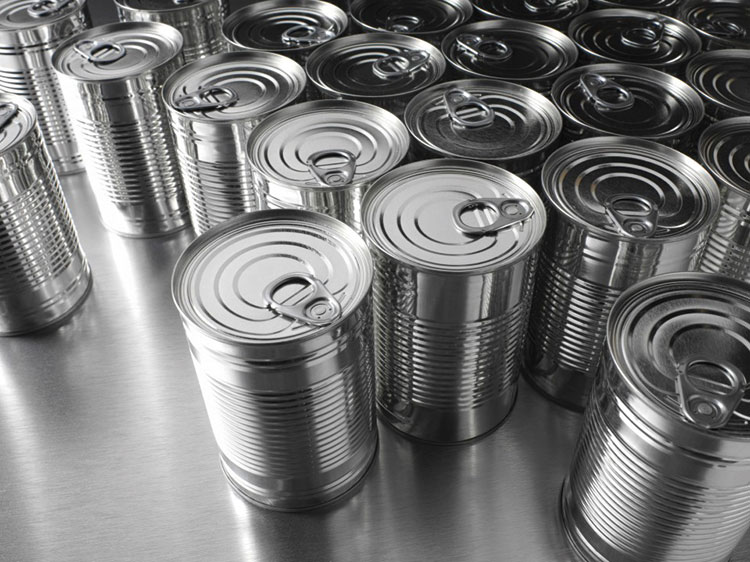When packaging is made of metal
Characteristics, data and facts of the Italian steel and aluminium packaging market in 2017. Barbara Iascone

The metal packaging category includes the types of packaging made of steel and aluminium. Generally speaking they are packs with obvious similarities and used to package the same product categories. It is difficult, especially for consumers, to recognize the differences,
which is also why, during recycling, steel and aluminium are often collected together and then separated using magnets.
Steel packaging has always been associated with the world of food preserves, both as primary packaging (cans for preserves) and as closures (caps for glass jars).
Aluminium packaging on the other hand applies more to the world of beverages (cans) and cosmetics (spray cans, various bottles).
In 2017 total Italian production of the two types was 959,000 tonnes (+ 4.4% compared to 2016). In terms of weight, steel packaging accounts for 87% of the total, while aluminium packaging accounts for 13%. The situation is completely different if we analyse turnover (sales), given that, in this case, steel stands at 35% and aluminium at 65%.
Overall in Italy metal packaging has very high recycling percentages second only to paper: in 2017, over 75% of metal packaging released for consumption was in fact recycled (source CONAI).
Steel & aluminium: typologies and sectors of use
• Steel packaging is divided between light tinplate containers and sheet metal drums. Tinplate packaging is subdivided into three types: open top, general line and closures.
Open top is used for packaging food products (peeled tomatoes, vegetable and fish preserves, pet food ...).
General line is intended for chemical products such as paints, varnishes and solvents ... but this category also includes tins used to pack food oil and, furthermore, the aerosol cans used in the food and non-food sectors. Closures are constituted by crown caps and the twist-off capsules.
The drums are produced with steel sheet without tin coating, and are protected by adequate internal and external coating and can be cylindrical or truncated-conical in shape. They feature capacities between 50 and 300 litres, with a clear prevalence for the capacity of 200 litres.
The drums can be used in the food industry - for example for transferring tomatoes from the fields where they are harvested to the processing facilities - or for oil for industrial use, even non-food oil, petrol, fuels, etc.

• Aluminium packaging comprises various containers for food and non-food items, beverage cans, tins for food preserves, trays, tubes for food and non-food products (tomato concentrate, sauces, paints, cosmetics ...). Aluminium containers also include aerosol cans and flasks used above all in the cosmetics field.
Aluminium foil and the closures, screw capsules, easy open, etc. are also included in this category.
Steel packaging: dimensions and characteristics of the Italian market
• Tinplate. In 2017, Italian production registered excellent growth rates: + 4.7% in reference to data expressing quantities exceeding 833,000 tons, with a turnover of 1,573 million euros, + 5% compared to the previous year.
The decline in imports already registered in 2016 continues, albeit at a lower pace: After the -6.7% in 2016, imports show a 2% drop in 2017, while exports show a growth of 6.3%.
Production of tinplate packaging stands at 722,000 tons, with a growth rate of + 5.3% compared to 2016. This area has driven the positive trend of the entire steel packaging sector.
Different types of packaging fall into this category and differ according to the areas of application.
In quantitative terms, in 2017 open top packaging still put in a significant performance, accounting for 58.8% of total tinplate packaging, albeit slightly lower than in 2016.
The general line segment - considering only chemical products and fancy tins, with the exclusion of food oil and spray cans - reached 21.2% in 2017. It should be noted that food oil tins accounted for 3.9% of the category, showing a decrease compared to 2016 when they stood at 4.7%. This is prevalently due to the strong drop in olive oil production in 2017.
Another category in the tinplate packaging sector is that of aerosol cans, that in 2017 stood at 4.8%.
Closures accounted for 11.3%.
• Thin sheet. In 2017 the steel drum area expressed a production of 112,000 tons, of which 12,500 were destined for export and 100,000 for the Italian domestic market. Imports are substantially absent. Steel drums are used around 70% in the petrochemical sector and for the remaining 30% they are used for the handlingseeds, tomatoes, or for the transport of products destined for industry.
Aluminium packaging: dimensions and characteristics of the Italian market
Aluminium used to produce packaging includes can stock (for beverage cans), foil stock (for both foil and capsules), can bodies (for food can bodies) and pastilles (for the production of spray cans).
Countless alloys are used to make up the various products and vary according to the types of production and different uses. According to data derived from Packaging in Figures, 2017 has shown growth, both in terms of turnover (+ 5.4% compared to 2016, exceeding 2.9 billion euro) and production (+ 1.2% with 124.100 tons of aluminium packaging).
The trade balance was also positive, both in terms of exports (+ 8.9%) and imports (+ 17.7%). Italian domestic demand, on the other hand, showed a slightdrop (-0.3%).
Let us now look in detail at the trend of the different types of packaging.
32% of Italian national production is accounted for by beverage and food cans, which in 2017 grew by 2.4%.
Foil as whole (including wrapping foil and foil for closures, for example yoghurt pots) absorbs 31.2% of production and, in 2017, registered a + 9.6% over the previous year. Closures are up by 2.5%, while food trays are down (-4%).
With reference to activity in terms of weight, in the last decade the aluminium packaging sector showed an annual growth rate of 2.4%.
Considering the reduction of the average weight of different types of packaging, the growth rate is estimated to be around 3.2% on average per year.
With reference to production expressed in tons, the current production structure of aluminium packagingshows the following breakdown:
- 32% containers (beverage cans, food cans , spray cans and flexible tubes);
- 20% closures;
- 17% food trays;
- 11% wrapping foil;
- 20% other.
In 2017 61.8% of aluminium containers were used in the beverage sector, 20.5% were used in the food area (including pet food), 16.8% in the cosmetics and pharmaceutical sectors, while the remaining 0.9% comes under “other”.
Recycling metal packaging
On the basis of the data provided by RICREA, the consortium that deals with steel packaging recycling at national level, in 2017 75% of steel packaging released for consumption was recycled. The subdivision by type of packaging sees the greatest flow in the open top area with a 30% share; drums and tanks account for 24%, general line packaging 16%, followed by closures with 8%. The remaining 17% is divided between straps and wire (9%) and the “other packaging” listing (8%).
The goal of RICREA for 2018 is achieve the recycling of 78.2% of steel packaging released for consumption.
As for the data relating to aluminium, according to surveys made by CIAL, the consortium that deals with the recycling of aluminium packaging, in 2017 63.4% of packaging placed in circulation was recovered for recycling. This percentage is down compared to the previous year, partly due to an increase of the amount placed on the market for consumption and partly due to the decrease in the quantities of recycled packaging.
The packagingmarketed in 2017 is divided up as follows:
- 51.6% beverage cans, spray cans and various canned food;
- 29.1% tubs, trays, tubes and capsules;
- 18.6% flexible food, thin foil and polylaminates with prevalence of aluminium;
- 0.7% other packaging.
The CIAL’s goal for 2017 is to achieve the recycling of 65% of packaging released for consumption.
Barbara Iascone
Istituto Italiano Imballaggio




















